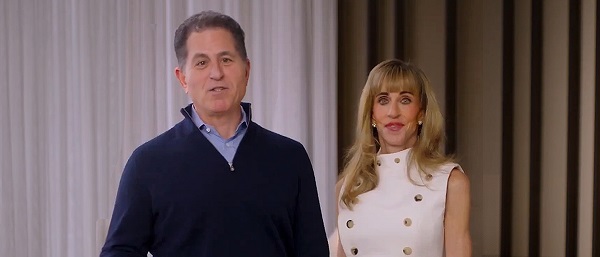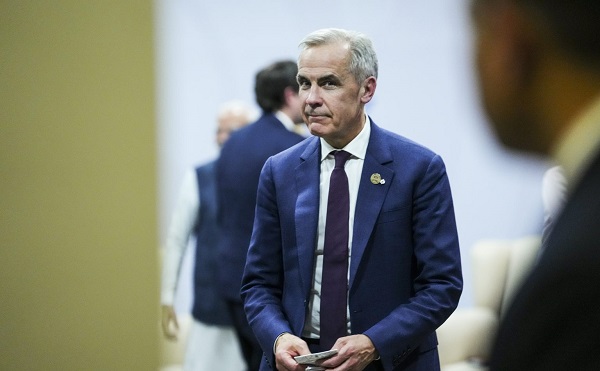Uncategorized
Newspaper says Turkey has audio of Saudi writer’s slaying

ISTANBUL — Turkish officials have an audio recording of the alleged killing of journalist Jamal Khashoggi from the Apple Watch he wore when he walked into the Saudi Consulate in Istanbul over a week ago, a pro-government Turkish newspaper reported Saturday.
The new claim published by the Sabah newspaper, through which Turkish security officials have leaked much information about the case, didn’t immediately explain how officials there also reportedly have video of Khashoggi’s alleged slaying.
However, it puts more pressure on Saudi Arabia to explain what happened to Khashoggi, who has written critically about Saudi Crown Prince Mohammed bin Salman, after he walked into the consulate Oct. 2. The kingdom has maintained the allegations against it are “baseless,” though an official early Saturday acknowledged for the first time some believe Khashoggi was killed by the kingdom.
Authorities recovered the audio from Khashoggi’s iPhone and his iCloud account, the newspaper said. The journalist had given his phones to his fiancée before entering the consulate.
The newspaper also alleged Saudi officials tried to delete the recordings first by incorrectly guessing Khashoggi’s PIN on the watch, then later using the journalist’s finger. However, Apple Watches do not have a fingerprint ID unlock function like iPhones. The newspaper did not address that in its report.
An Apple Watch can record audio and can sync that later with an iPhone over a Bluetooth connection. The newspaper’s account did not elaborate on how the Apple Watch synced that information to both the phone and Khashoggi’s iCloud account.
Turkish officials have not answered queries from The Associated Press about Khashoggi’s Apple Watch.
Turkish officials say they believe a 15-member Saudi “assassination squad” killed Khashoggi at the consulate. They’ve also alleged that they have video of the slaying, but not explained how they have it.
Turkey has yet to publish any evidence of him being slain, though surveillance footage around the consulate shows a convoy of vehicles with diplomatic license plates leaving the Saudi Consulate for the consul’s home in Istanbul a little under two hours after Khashoggi’s arrival.
Saudi Arabia has said it had nothing to do with Khashoggi’s disappearance, without explaining or offering evidence of how the writer left the consulate and disappeared into Istanbul with his fiancée waiting outside. A Saudi-owned satellite news channel has begun referring to the 15-man team as “tourists,” without providing evidence to support the claim. It echoes how Russia has described the men who allegedly carried out the Novichok nerve agent poisonings in Salisbury, England, in March.
Early on Saturday, the state-run Saudi Press Agency published a statement from Saudi Interior Minister Prince Abdulaziz bin Saud again denying the kingdom’s involvement. This time, however, it acknowledged for the first time that Saudi Arabia was accused of killing Khashoggi.
“What has been circulating about orders to kill (Khashoggi) are lies and baseless allegations against the government of the kingdom, which is committed to its principles, rules and traditions and is in compliance with international laws and conventions,” Prince Abdulaziz said.
Khashoggi’s disappearance has put pressure on President Donald Trump, who has enjoyed close relations with the Saudis since entering office. Trump promised to personally call Saudi Arabia’s King Salman soon about “the terrible situation in Turkey.”
“We’re going to find out what happened,” Trump pledged Friday when questioned by reporters in Cincinnati where he was headlining a political rally.
Separately, Secretary of State Mike Pompeo spoke to Khashoggi’s fiancee, Hatice Cengiz, who accompanied him to the Saudi consulate, the State Department said Friday. No details of the conversation were released.
In an interview Friday with The Associated Press, Cengiz said Khashoggi was not nervous when he entered the consulate to obtain paperwork required for their marriage.
“He said, ‘See you later my darling,’ and went in,” she told the AP.
In written responses to questions by the AP, Cengiz said Turkish authorities had not told her about any recordings and Khashoggi was officially “still missing.”
She said investigators were examining his cellphones, which he had left with her.
A delegation from Saudi Arabia arrived in Turkey on Friday as part of an investigation into the writer’s disappearance. In a statement posted on Twitter, the Saudis welcomed the joint effort and said the kingdom was keen “to sustain the security and safety of its citizenry, wherever they might happen to be.”
Global business leaders also are reassessing their ties with Saudi Arabia, stoking pressure on the Gulf kingdom to explain what happened to Khashoggi.
Khashoggi, who was considered close to the Saudi royal family, had become a critic of the current government and Prince Mohammed, the 33-year-old heir apparent who has shown little tolerance for criticism.
As a contributor to the Post, Khashoggi has written extensively about Saudi Arabia, including criticism of its war in Yemen, its recent diplomatic spat with Canada and its arrest of women’s rights activists after the lifting of a ban on women driving.
Those policies are all seen as initiatives of the crown prince, who has also presided over a roundup of activists and businessmen.
___
Gambrell reported from Dubai, United Arab Emirates. Associated Press writers Zeke Miller in Washington and Suzan Fraser in Ankara contributed to this report.
Zeynep Bilginsoy And Jon Gambrell, The Associated Press
Uncategorized
Cost of bureaucracy balloons 80 per cent in 10 years: Public Accounts

The cost of the bureaucracy increased by $6 billion last year, according to newly released numbers in Public Accounts disclosures. The Canadian Taxpayers Federation is calling on Prime Minister Mark Carney to immediately shrink the bureaucracy.
“The Public Accounts show the cost of the federal bureaucracy is out of control,” said Franco Terrazzano, CTF Federal Director. “Tinkering around the edges won’t cut it, Carney needs to take urgent action to shrink the bloated federal bureaucracy.”
The federal bureaucracy cost taxpayers $71.4 billion in 2024-25, according to the Public Accounts. The cost of the federal bureaucracy increased by $6 billion, or more than nine per cent, over the last year.
The federal bureaucracy cost taxpayers $39.6 billion in 2015-16, according to the Public Accounts. That means the cost of the federal bureaucracy increased 80 per cent over the last 10 years. The government added 99,000 extra bureaucrats between 2015-16 and 2024-25.
Half of Canadians say federal services have gotten worse since 2016, despite the massive increase in the federal bureaucracy, according to a Leger poll.
Not only has the size of the bureaucracy increased, the cost of consultants, contractors and outsourcing has increased as well. The government spent $23.1 billion on “professional and special services” last year, according to the Public Accounts. That’s an 11 per cent increase over the previous year. The government’s spending on professional and special services more than doubled since 2015-16.
“Taxpayers should not be paying way more for in-house government bureaucrats and way more for outside help,” Terrazzano said. “Mere promises to find minor savings in the federal bureaucracy won’t fix Canada’s finances.
“Taxpayers need Carney to take urgent action and significantly cut the number of bureaucrats now.”
Table: Cost of bureaucracy and professional and special services, Public Accounts
| Year | Bureaucracy | Professional and special services |
|
$71,369,677,000 |
$23,145,218,000 |
|
|
$65,326,643,000 |
$20,771,477,000 |
|
|
$56,467,851,000 |
$18,591,373,000 |
|
|
$60,676,243,000 |
$17,511,078,000 |
|
|
$52,984,272,000 |
$14,720,455,000 |
|
|
$46,349,166,000 |
$13,334,341,000 |
|
|
$46,131,628,000 |
$12,940,395,000 |
|
|
$45,262,821,000 |
$12,950,619,000 |
|
|
$38,909,594,000 |
$11,910,257,000 |
|
|
$39,616,656,000 |
$11,082,974,000 |
Uncategorized
Trump Admin Establishing Council To Make Buildings Beautiful Again


From the Daily Caller News Foundation
By Jason Hopkins
The Trump administration is creating a first-of-its-kind task force aimed at ushering in a new “Golden Age” of beautiful infrastructure across the U.S.
The Department of Transportation (DOT) will announce the establishment of the Beautifying Transportation Infrastructure Council (BTIC) on Thursday, the Daily Caller News Foundation exclusively learned. The BTIC seeks to advise Transportation Secretary Sean Duffy on design and policy ideas for key infrastructure projects, including highways, bridges and transit hubs.
“What happened to our country’s proud tradition of building great, big, beautiful things?” Duffy said in a statement shared with the DCNF. “It’s time the design for America’s latest infrastructure projects reflects our nation’s strength, pride, and promise.”
“We’re engaging the best and brightest minds in architectural design and engineering to make beautiful structures that move you and bring about a new Golden Age of Transportation,” Duffy continued.
Mini scoop – here is the DOT’s rollout of its Beautifying Transportation Infrastructure Council, which will be tasked with making our buildings beautiful again. pic.twitter.com/
9iV2xSxdJM — Jason Hopkins (@jasonhopkinsdc) October 23, 2025
The DOT is encouraging nominations of the country’s best architects, urban planners, artists and others to serve on the council, according to the department. While ensuring that efficiency and safety remain a top priority, the BTIC will provide guidance on projects that “enhance” public areas and develop aesthetic performance metrics.
The new council aligns with an executive order signed by President Donald Trump in August 2025 regarding infrastructure. The “Making Federal Architecture Beautiful Again” order calls for federal public buildings in the country to “respect regional architectural heritage” and aims to prevent federal construction projects from using modernist and brutalist architecture styles, instead returning to a classical style.
“The Founders, in line with great societies before them, attached great importance to Federal civic architecture,” Trump’s order stated. “They wanted America’s public buildings to inspire the American people and encourage civic virtue.”
“President George Washington and Secretary of State Thomas Jefferson consciously modeled the most important buildings in Washington, D.C., on the classical architecture of ancient Athens and Rome,” the order continued. “Because of their proven ability to meet these requirements, classical and traditional architecture are preferred modes of architectural design.”
The DOT invested millions in major infrastructure projects since Trump’s return to the White House. Duffy announced in August a $43 million transformation initiative of the New York Penn Station in New York City and in September unveiledmajor progress in the rehabilitation and modernization of Washington Union Station in Washington, D.C.
The BTIC will comprise up to 11 members who will serve two-year terms, with the chance to be reappointed, according to the DOT. The task force will meet biannually. The deadline for nominations will end Nov. 21.
-

 Business16 hours ago
Business16 hours agoRecent price declines don’t solve Toronto’s housing affordability crisis
-

 Bruce Dowbiggin2 days ago
Bruce Dowbiggin2 days agoSometimes An Ingrate Nation Pt. 2: The Great One Makes His Choice
-

 armed forces1 day ago
armed forces1 day agoGlobal Military Industrial Complex Has Never Had It So Good, New Report Finds
-

 National2 days ago
National2 days agoMedia bound to pay the price for selling their freedom to (selectively) offend
-

 Daily Caller15 hours ago
Daily Caller15 hours agoTech Mogul Gives $6 Billion To 25 Million Kids To Boost Trump Investment Accounts
-

 C2C Journal1 day ago
C2C Journal1 day agoLearning the Truth about “Children’s Graves” and Residential Schools is More Important than Ever
-

 Business1 day ago
Business1 day agoWhy Isn’t There a Cure for Alzheimer’s Disease?
-

 Censorship Industrial Complex8 hours ago
Censorship Industrial Complex8 hours agoA Democracy That Can’t Take A Joke Won’t Tolerate Dissent










